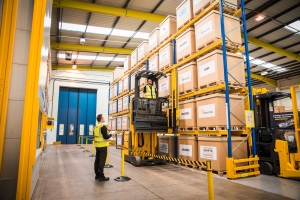Complete Powerpoint slide presentation for forklift instructors. Ready made course.
aitt press release: Bringing industry up to code on transport groupings
AITT aims to clear up confusion about workplace transport categories.
 The Association of Industrial Truck Trainers is calling for an improved understanding of workplace transport categories in a bid to ensure better training and recruitment across the industry. And, by way of practical help to employers, AITT has created a free, downloadable reference chart illustrating the categories of workplace transport and the codes for each. (This is also shown in non downloadable form on this page.). The actual download link is at the bottom of this page.
The Association of Industrial Truck Trainers is calling for an improved understanding of workplace transport categories in a bid to ensure better training and recruitment across the industry. And, by way of practical help to employers, AITT has created a free, downloadable reference chart illustrating the categories of workplace transport and the codes for each. (This is also shown in non downloadable form on this page.). The actual download link is at the bottom of this page.
Workplace transport is divided into 14 coded categories of trucks based on size and function. For example: pedestrian pallet trucks (category A), counterbalance (category B), sideloaders (category C), and rough terrain trucks (category D).
Adam Smith, Managing Director of AITT explained: “There is a lot of confusion among training providers, operators, employers and recruitment agencies over which categories trucks fall into, which could potentially mean that an operator could receive the incorrect training or apply for the wrong job.
“The problem is that people often assume that one qualification covers several vehicles, especially if they look similar. The truth is that trucks have specific controls or features that change how they operate, meaning different training is required for each.
“For employers, being able to identify categories correctly will make recruitment more efficient. They will be able to easily compare the transport codes on an operator’s qualification with the type of truck on their site, and can decide whether conversion training is required.”
Knowing the difference between categories and codes is also important for recruitment agencies and those applying for roles.
“If a company is advertising for an operator, they should ideally mention the category and codes of the trucks they will be using on site, rather than a broad term, such as picker,” said Adam. “Anyone looking for work will then be able to see if their specific qualifications match what the employer requires.”
For all categories of workplace transport, proper training is essential to ensure that equipment is used safely and correctly, as outlined in the HSE’s Approved Code of Practice for rider-operated lift trucks (L117).
“There is a troubling misconception that no training is required for some types of truck,” continues Adam. “One popular myth, for example, is that operators don’t need training on category A transport, such as pedestrian pallet trucks or rider pallet stackers. That is plain wrong.
“Materials handling equipment of all types is potentially dangerous, and it is vital that employers identify what kind of workplace transport they have on site, so they can make sure that operators have received appropriate, accredited training, with the certificates to prove it.”
Download reference chart | Email Adam Smith | Phone AITT 01530 810867